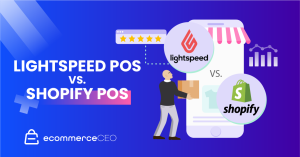If a picture is worth a thousand words, how do videos stack up?
Based on recent statistics from Wyzowl’s “State of Video Marketing 2022” report, videos are more than holding their own.
Eighty-eight percent of those surveyed say that they’ve been convinced to buy a product or service by watching a brand’s video. And, respondents are twice as likely to share video content with their friends than any other type of content.
Blog posts, product pages, and social media posts simply can’t keep pace.
But what type of videos deliver the best performance for ecommerce brands, and what goes into making a standout media experience? This post provides an overview of three types of ecommerce videos worth incorporating into your strategy — and tips on how to make them work for you.
1. Brand Story Videos
Who are you? What does your brand do? Why does it matter? Brand story videos help your team show potential customers what’s unique about your ecommerce site — and why they should care.
The key to creating a great brand video is to remember that your products are not your brand. While they drive revenue on your site and selling them is essential to staying in operation, products aren’t people.
Products don’t have hopes, dreams, or emotions — instead, they’re the result of the passion, time, and effort put in by people.
Effective storytelling is a craft that combines product content with compelling characters to create a narrative people are willing to stop scrolling for — and, hopefully, a message that makes them more likely to share your content with their followers.
Yeti: Crafting a Great Brand Story Takes Time
Outdoor gear-maker Yeti offers a great example of an engaging brand story video.
Their YouTube video, “The Long Time,” clocks in at nearly 20 minutes and focuses on the effort of architect Jack Sanders.
Sanders’s work rebuilding a neglected baseball field in Alabama led to a lifelong passion, and Yeti manages to tell a compelling story that includes subtle but consistent branding. Combined with impressive production value, the video is a masterclass in solid brand storytelling.
2. Product Overview Videos
Product overview videos are — not surprisingly — more focused on products. The goal of this type of video is to provide potential customers a sense of what your product does, why it stands out from the crowd, and what buyers can expect when they make a purchase.
Think of a product overview video as a step up from traditional product detail pages (PDPs). Instead of simply providing text-based information about your product along with a few images, product overview videos give customers a sense of the product in action.
Brands like Starbucks, HP, and Febreze have taken the lead in their respective markets by adding contextual images and better text to their product pages.
Video takes the experience a step further.
Man Crates: A Brief (But Effective) Product Overview
The ecommerce site Man Crates provides unique gifts that come in hard-to-open wooden crates. This challenge adds to the overall product experience.
The company’s “Wooden Crate Grand Opening” video on YouTube shows exactly what customers can expect from the opening experience, along with a parting look of joy from the crate opener as he sees what’s inside.
While the video is only 30 seconds long, it does a great job of capturing both the spirit of the brand and exactly what they’re offering to customers.
3. How-To Videos
How-to videos are a great way to show potential customers what your product or service can do in action. They also have a potentially longer lifespan than other types of ecommerce videos.
Consider technology maker Vizio. While the brand has a solid video catalog, one of its most popular videos (by far) is a how-to troubleshooting guide on YouTube for a Vizio remote from 2013.
While the popularity of this video may speak to the need for more compelling content from the company, it also highlights the engagement power of how-to videos.
IKEA: How-Tos in Your Own Home
Swedish furniture store IKEA offers a good example of a how-to video on YouTube with “Say Hej to IKEA Place.” This app lets customers “see” IKEA furniture in their homes using their smartphone’s camera. The associated video does a great job of showing customers how the app works, what it can do, and what it looks like in action.
Capturing the Value of Ecommerce Videos
The right ecommerce videos can help your brand connect with customers, drive social sharing, and boost overall conversion. These assets are also part of a larger sales and marketing strategy: enhanced content.
With enhanced content, your brand can convert your product detail pages into media-rich content experiences that include images, videos, charts, and anything else that marketing research shows as compelling to consumers.
The results speak for themselves: 54% of shoppers in Great Britain, 50% in Germany, and 41% in the U.S. rank the quality of images and product descriptions as a top-three reason for choosing where to shop online. And 18% of U.S. consumers say that better product images or videos have driven them to buy the higher-priced option when comparing similar products online.
Put simply? For ecommerce brands, video is just the beginning. With a solid enhanced content strategy in place, your brand will be better positioned to capture consumer interest and increase online sales.
Ready to leverage video and other types of media to your advantage? Start building your enhanced content strategy with Salsify today.



